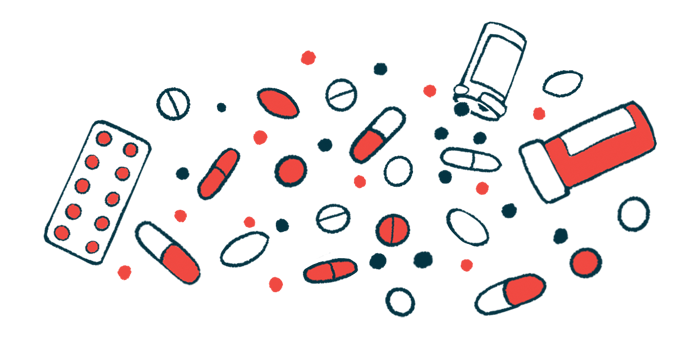Galafold Adherence High as Patients Report Life Quality Gains
Study examines factors that influence adherence to the Fabry chaperone therapy
Written by |

Adults with Fabry disease exhibited high levels of adherence to at-home Galafold (migalastat) treatment over a two-year period, according to a recent study.
Patients also reported a stable quality of life, with reductions in pain and physical limitations over time — all of which are factors that can influence the likelihood a person will take their treatment as prescribed, according to authors.
The main barrier to taking the medication was forgetfulness, “which should be addressed by attending physicians to maintain therapy adherence in the long run,” the researchers wrote.
The study, “Patient reported quality of life and medication adherence in Fabry disease patients treated with migalastat: A prospective, multicenter study,” was published in the journal Molecular Genetics and Metabolism.
In Fabry disease, genetic mutations in the GLA gene lead to a non-functional or partially functional alpha-galactosidase A (alpha-gal A) enzyme, which is needed to break down certain fatty substances. Consequently, these substances build up in body tissues, driving irreversible organ damage.
Galafold is an approved chaperone therapy from Amicus Therapeutics that is designed to restore alpha-gal A activity in patients carrying certain types of disease-causing mutations. It essentially works by attaching to the unstable or dysfunctional alpha-gal A, stabilizing it, and partially restoring its function.
Galafold is taken orally, every other day, with a two-hour interval to any food intake.
While oral self-administration offers convenience compared with other treatments, such as enzyme replacement therapies that are given as into-the-vein infusions at healthcare facilities, it also can be associated with poor medication adherence.
Not only can this directly influence its effectiveness, but poor adherence to the pricey medication can contribute to a high burden on the healthcare system.
Study design
The MALTA-FABRY study (NCT03683966) was designed to evaluate Galafold adherence and other patient-reported outcomes that can influence medication use, such as quality of life and pain symptoms.
A total of 40 adult Fabry patients with a mutation amenable to Galafold treatment were recruited at three German centers from 2017 to 2021. They were started on Galafold and followed for two years.
Of the 40 participants, three discontinued treatment before two years, reflecting an overall medication compliance of 92.5%.
The remaining 37 patients (19 men and 18 women) had a mean age of 52 years at the time they started Galafold treatment.
Treatment adherence was assessed with the Medication Adherence Questionnaire (MAQ). This questionnaire contains four questions related to different aspects of non-adherence, including forgetfulness, carelessness, stopping medication when feeling better, and stopping medication when feeling worse.
Patients earn one point for each question for which they answer “no.” A maximum score of four, therefore, means a person has the highest possible medication adherence, while a score of zero indicates poor adherence.
Among the 25 participants with available data at all time points, the average MAQ score after six months was 3.92, which remained similar after a year (3.76) and two years (3.8), reflecting high and stable treatment adherence.
Frequent forgetfulness
Forgetting to take the medication was the most frequent item on the MAQ scale that patients responded “yes” to, which the researchers noted could be attributed to the every-other-day treatment regimen and is “aggravated by a shift in the days of the week when [the] medication must be taken.”
“Higher compliance can be attained by encouraging patients to take their medicine regularly and practitioners should emphasize the importance of regular intake of [Galafold] in order to reach therapy goals,” the researchers wrote.
Of the 33 participants who had all available data or one missing data point, one had low adherence, eight had medium adherence, and 25 had high adherence at each available follow-up.
Quality of life remained largely stable in most domains, but was improved significantly in the role limitations due to physical activity and pain domains after two years of treatment.
Likewise, patients reported reductions in pain frequency and intensity within a year of starting Galafold treatment, and fewer days where they couldn’t work, although these were not considered statistically significant changes.
“This is quite remarkable given that therapy goals in [Fabry disease] usually aim at stabilization of current patient status,” the researchers wrote, noting that the findings support Galafold’s benefits beyond reduction of organ damage.
This study was supported by grants from Amicus.






